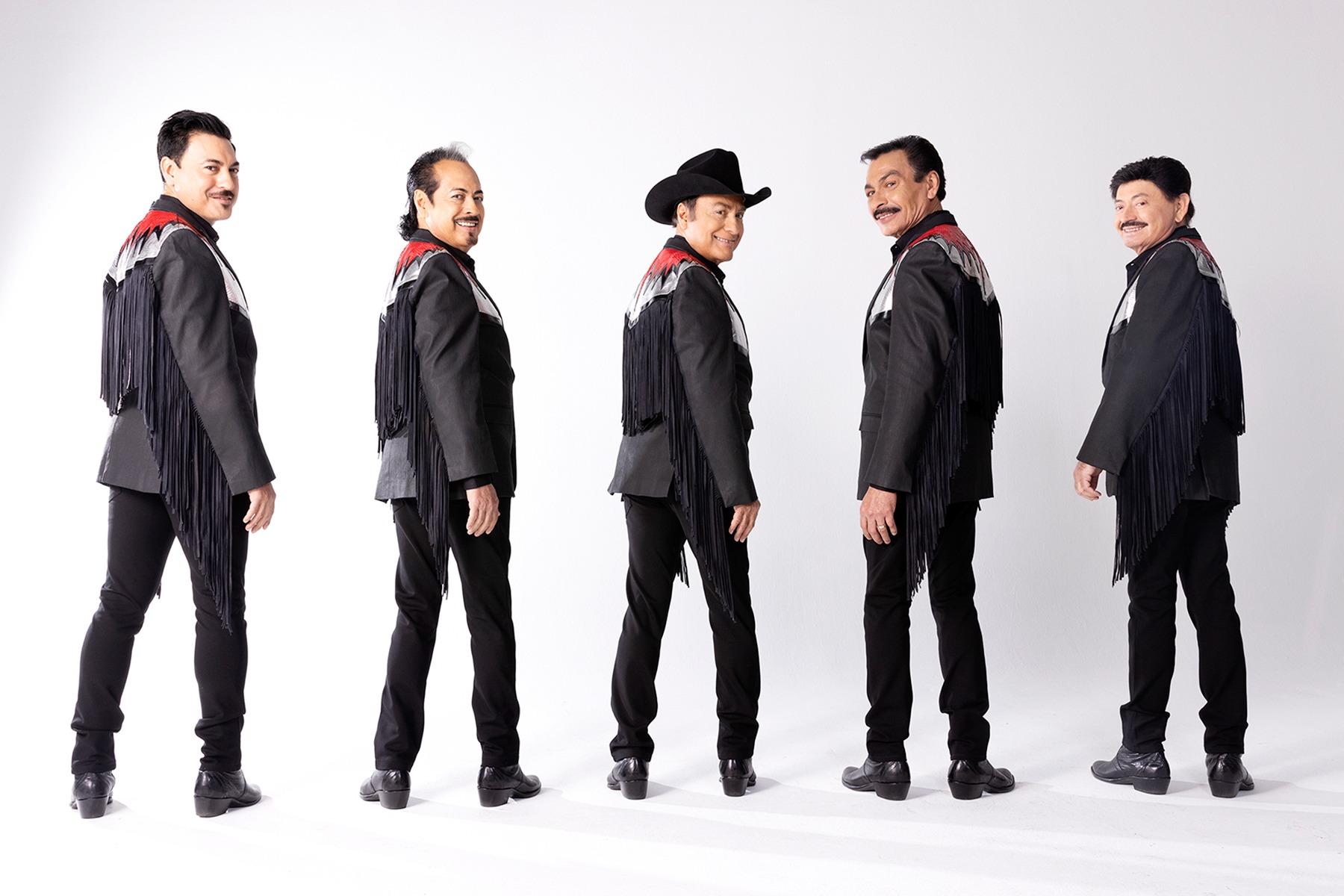
Mexican Legends Los Tigres Del Norte Look Back at Their Powerful ‘Stories To Tell’
More than 50 years ago, four teenaged boys from the small, remote town of Rosa Morada, Mocorito, in the state of Sinaloa, Mexico, arrived at the U.S. border, instruments in tow. They explained that they were budding musicians — they’d just spent months working in tiny bars across Mexicali, trying to earn some money to send back to their families — and they’d been invited to play a free show at a prison in California that they hoped would lead to more U.S. gigs. An immigration officer asked what their band name was, and they told him they didn’t have one. “What about ‘The Little Tigers of the North?’” he suggested.
The boys, who included brothers Jorge, Hernán, and Raul Hernández and their cousin Oscar Lara, thought about it. The officer joked that maybe “little” didn’t quite work — they’d grow up soon enough, but they perhaps they could be “The Tigers of the North.” The name was interesting — and in Spanish, it had a ring to it. By the time the young musicians stepped foot in the U.S., they were officially Los Tigres Del Norte.
This origin story, and the next five decades of the band’s career, are gorgeously laid out in Los Tigres Del Norte: Stories To Tell, a documentary directed by Carlos Perez Osorio, released this summer on Amazon Prime. The film arrives as Los Tigres are enjoying a major renaissance: In May, they shared the deluxe version of La Reunión, their first full album of all new songs in eight years. And throughout 2022, they’ve been hard at work, touring and sharing music that has defined entire generations.
Amid such a busy schedule, three of the now-five members of the band — musical director, lead vocalist, and accordion player Jorge; bassist and vocalist Hernán; and bajo sexto player and vocalist Luis — caught up with Nuevo Culture to discuss their new projects and adventures 50 years into an extraordinary legacy (Luis and multi-instrumentalist Eduardo both joined the band later; Los Tigres played for years with fifth member and saxophonist Lupe Oliva, who they met in California.) Alongside documentary producer Jose Nacif, they shared how both the film and the album have given them a chance to revisit their roots and explore the values that have made them one of the most enduring acts in Mexican music.
“So many memories come flooding to you,” Jorge says. “You look back at all of it and it almost feels like a movie that goes by so quickly.”
The documentary starts off with their childhood in Rosa Morada, where they grew up playing music and working on their family ranch, until the Hernández’s father was shot and left paralyzed during a dispute at a party one night. The eldest boys decided to leave home for the first time in their lives to try and make a living as musicians in a bigger city, eventually catching the attention of American promoters. Their brand of norteño music took off, leading to best-selling records, big hits, and even films that made them stars.
One of the most impressive qualities of the new film is just how much archival material is used. Fading photographs, grainy family videos, old ticket stubs, and concert footage shape the band’s story arc, an approach Perez Osorio knew he wanted to try from the start. Nacif explains that Los Tigres and their loyal fan base played a big role in locating some of those items; the filmmakers also turned to archives at universities and research centers in California.
“It was long process,” Nacif says. “Carlos insisted a lot that we find as much material as we could to illustrate such an impressive career path, decade by decade, so we could see how they grew over the years — even how they dressed over the years forms a kind of language about the evolution of the band. The group had to go back to their lock boxes and storage units and find material they had put away.”
“We were looking in the trunks of cars, everywhere,” Hernán adds with a laugh. “I gave them a big box of stuff we found — I met them in a Starbucks near a gas station where I live, and I handed it to them. The fact that so much made it in brings me a lot of joy.”
Perhaps most striking is the way the film captures the social, political, and cultural depth of the band’s discography. Los Tigres Del Norte have always made music that gives voice to the everyday struggles and stories of migrants: Songs such as “Vivir En Las Sombras,” “Tres Veces Mojado,” and “Jaula de Oro” have touched on the difficulties of migration and leaving one’s home in search of a better life. The band has connected to their communities in a granular way, getting involved in voter registration efforts, immigration legislation, and LGBTQ rights. In 2019, they released a Netflix documentary called Los Tigres del Norte at Folsom Prison, which showed them preparing for a historic performance that followed in Johnny Cash’s footsteps.
“We’re narrators of these issues, chroniclers of what people go through,” Jorge explains. “We see, we feel, and we live these different situations in the flesh. There are so many experiences that we have lived ourselves, that adorn our songs and shape what the fans know Los Tigres Del Norte to be.”
Immigrant communities continue to face injustices and hardships, particularly in the U.S. When we speak, it’s just a few days after 53 migrants, including three children, were found dead in an overheated tractor-trailer near San Antonio, and more details about the shooting in the predominantly Mexican-American city of Uvalde have been unfolding in the news. Such reports feel personal to Hernán, who has grandchildren he wishes he could protect. “When things like this happen, you call to see how they are and you almost wish they wouldn’t find out about these things,” he says. But even amid the most difficult tragedies, the band sees their role as artists to continue speaking out and raising awareness.
“What we can do is lift our voices and relay the issues we’ve seen, as we’ve done in our past songs, and produce things that help new generations become more aware. We have to be conscientious together,” Luis says.
Writing about what they were experiencing firsthand is part of what makes La Reunión so moving. The pandemic radically changed the lives of every band member in Los Tigres: Touring stopped, and they couldn’t see each other and some family members for a long time. They were finally able to gather again while recording La Reunión, which feels like a celebration of life and a reminder of the many years they’ve spent together. “These are real-life stories,” Jorge says. “We sing to love, to disappointments, to all these ideas that make this a varied album that we want to dedicate to our audiences.”
And they’ve got more stories left to tell. The brothers joke that maybe they’ve got a few more documentaries left in them, especially given how well they got along with Perez Osorio and Nacif. “In an hour and half, which is how long this film lasts… these are just the highlights,” Hernan says. “It’s not the whole story, but it shows so much of what we lived and how we won a little bit of people’s hearts.”



